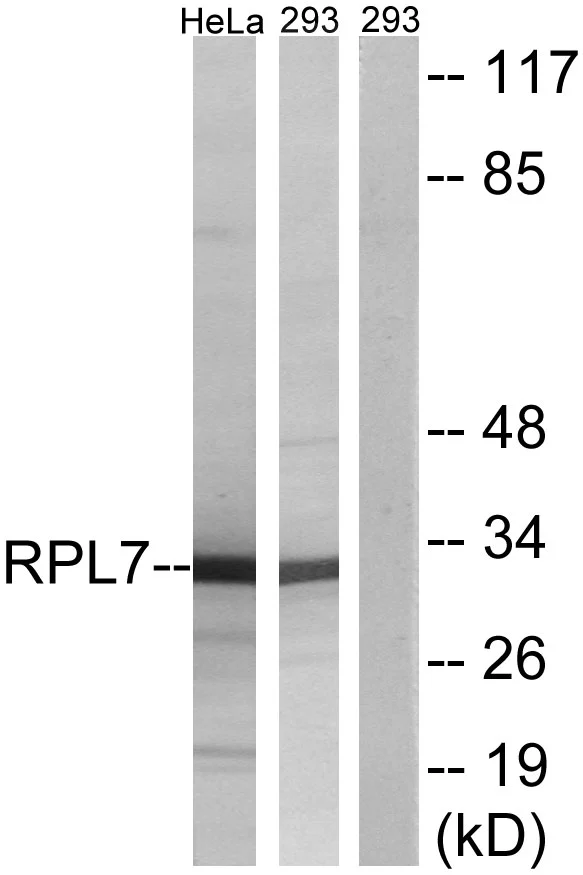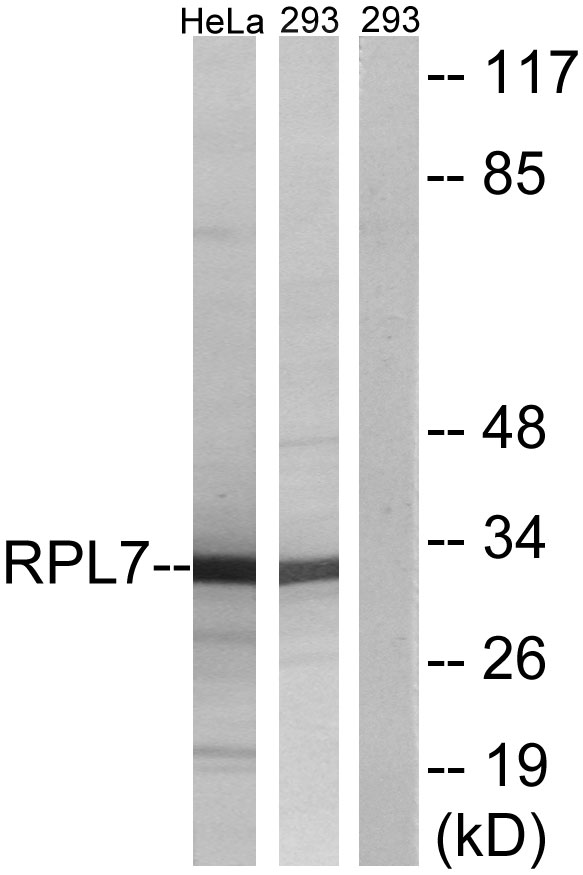
WB analysis of 293 and HeLa cell lysates using GTX87592 RPL7 antibody. The lane on the right is blocked with the synthesized peptide.
RPL7 antibody
GTX87592
ApplicationsWestern Blot
Product group Antibodies
TargetRPL7
Overview
- SupplierGeneTex
- Product NameRPL7 antibody
- Delivery Days Customer9
- Application Supplier NoteWB: 1:500~1:1000. *Optimal dilutions/concentrations should be determined by the researcher.Not tested in other applications.
- ApplicationsWestern Blot
- CertificationResearch Use Only
- ClonalityPolyclonal
- ConjugateUnconjugated
- Gene ID6129
- Target nameRPL7
- Target descriptionribosomal protein L7
- Target synonymsL7, humL7-1, uL30, large ribosomal subunit protein uL30, 60S ribosomal protein L7
- HostRabbit
- IsotypeIgG
- Protein IDP18124
- Protein NameLarge ribosomal subunit protein uL30
- Scientific DescriptionRibosomes, the organelles that catalyze protein synthesis, consist of a small 40S subunit and a large 60S subunit. Together these subunits are composed of 4 RNA species and approximately 80 structurally distinct proteins. This gene encodes a ribosomal protein that is a component of the 60S subunit. The protein belongs to the L30P family of ribosomal proteins. It contains an N-terminal basic region-leucine zipper (BZIP)-like domain and the RNP consensus submotif RNP2. In vitro the BZIP-like domain mediates homodimerization and stable binding to DNA and RNA, with a preference for 28S rRNA and mRNA. The protein can inhibit cell-free translation of mRNAs, suggesting that it plays a regulatory role in the translation apparatus. It is located in the cytoplasm. The protein has been shown to be an autoantigen in patients with systemic autoimmune diseases, such as systemic lupus erythematosus. As is typical for genes encoding ribosomal proteins, there are multiple processed pseudogenes of this gene dispersed through the genome. [provided by RefSeq, Jul 2008]
- Storage Instruction-20°C or -80°C,2°C to 8°C
- UNSPSC12352203




